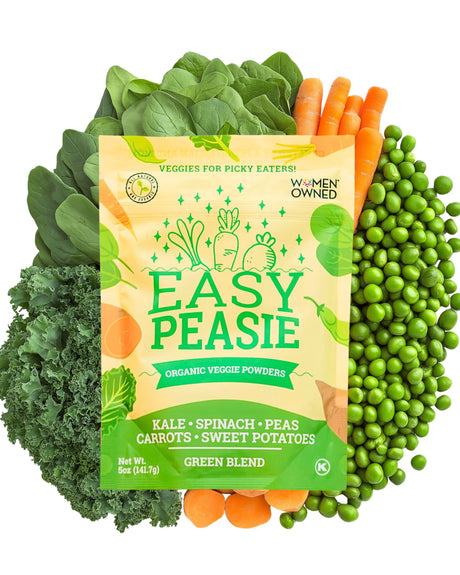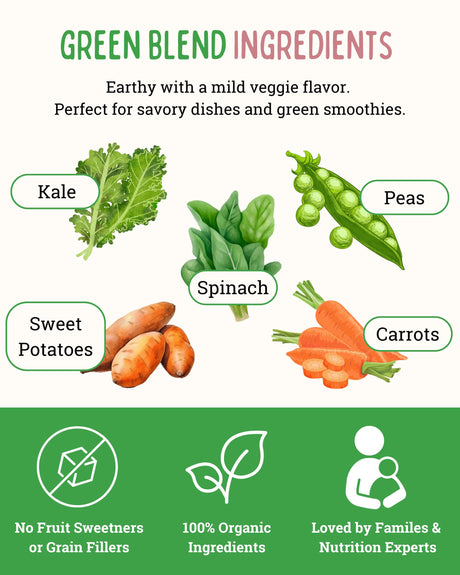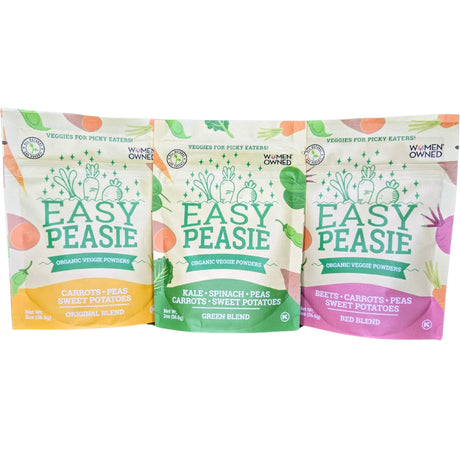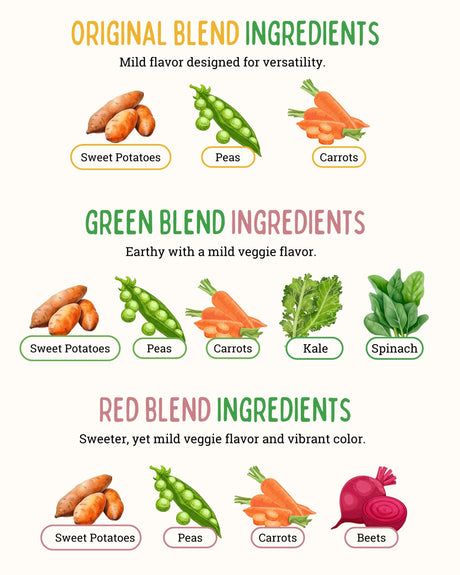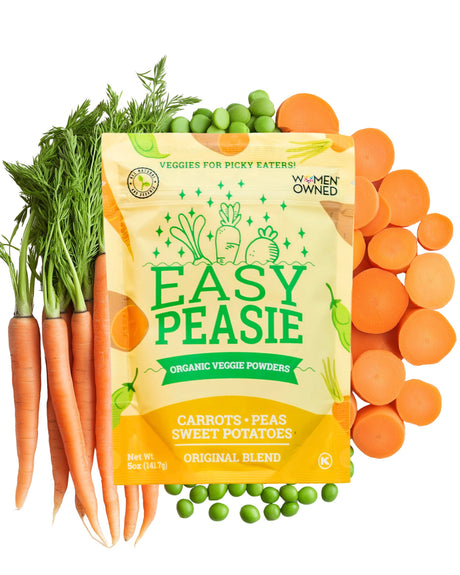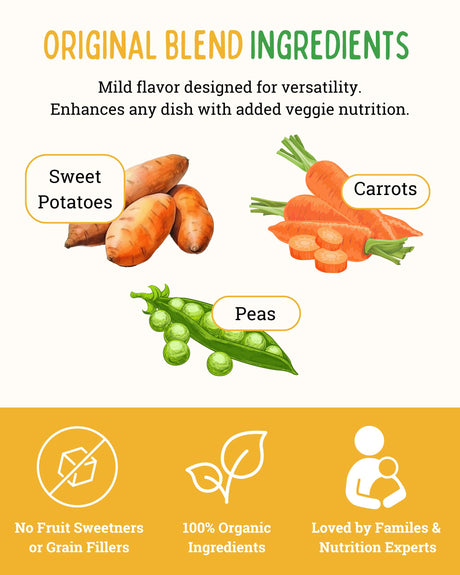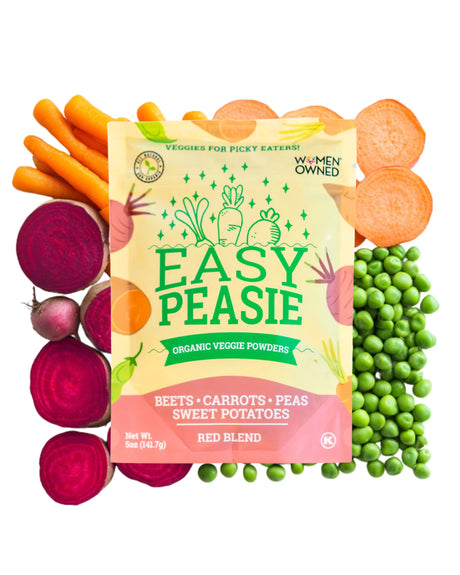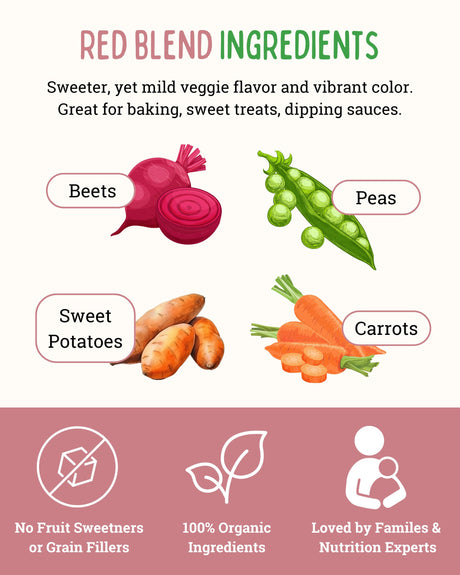The Fiber Factor in Kids' Diets
When it comes to children's nutrition, there's always a buzzword or superfood making the rounds. But let's chat about a tried-and-true hero: fiber.
Often overshadowed by flashier nutrients, fiber plays a pivotal role in our little ones' health, ensuring their digestive systems run smoothly and even helping to stabilize those ever-fluctuating energy levels.
Myths and Little Munchers
Now, if you've heard that kids don't need as much fiber, or that it might even be harmful, you're not alone. There's a swirl of misconceptions out there.
Some parents worry too much fiber will fill up tiny tummies, leaving no room for other essential nutrients. Others have heard tales of bloated bellies and gas – not exactly what you want for your active kiddo.
But here's the thing: when introduced correctly and paired with adequate hydration, fiber can be a fantastic addition to your child's plate. Let's dive deeper and debunk some myths while we're at it!
Unraveling the Fiber Mystery
At its core, fiber is a type of carbohydrate. But unlike other carbs that get broken down and absorbed by our bodies, fiber passes through relatively intact. Think of it as the unsung hero of the digestive world, working behind the scenes to keep things moving smoothly.
Two Sides of the Fiber Coin: Soluble and Insoluble
When we talk about fiber, it's essential to understand that not all fibers are created equal. There are two main types: soluble and insoluble.
Soluble fiber dissolves in water, forming a gel-like substance. Found in foods like oats, beans, and certain fruits, this type of fiber can help lower blood cholesterol and stabilize blood sugar levels. It's like the peacekeeper of the digestive system, ensuring everything remains calm and balanced.

On the other hand, insoluble fiber doesn't dissolve in water. Instead, it adds bulk to the diet, helping prevent constipation and keeping the digestive system on track.
Think of it as the personal trainer for your intestines, ensuring everything gets a good workout and stays in shape. You'll find this type of fiber in foods like whole grains, nuts, and many vegetables.
Fiber's Role: More Than Just Digestion
While fiber is often lauded for its digestive benefits, its role in the body is multifaceted. Beyond aiding digestion, fiber helps regulate the body's use of sugars, keeping our hunger and blood sugar in check.
It's like a gentle regulator, ensuring everything operates at just the right pace. So, the next time you reach for a fiber-rich snack, know that you're doing wonders for your body, from the inside out!
The Fabulous Benefits of Fiber for Our Little Ones
Navigating the world of children's nutrition can sometimes feel like a maze. But amidst the twists and turns, there's one nutrient that consistently stands out as a superstar: fiber. Let's dive into the myriad of benefits fiber offers to our kiddos.
Digestive Dynamo: Keeping Things Moving
One of the most celebrated roles of fiber is its impact on digestive health. For kids, this is crucial. A diet rich in fiber helps prevent the all-too-common issue of constipation, ensuring regular and comfortable bowel movements. Think of fiber as the traffic director of the digestive highway, ensuring everything flows smoothly and efficiently.
Fullness Factor: Curbing Those Constant "I'm Hungry" Chants
Every parent knows the drill – mere minutes after a meal, the "I'm still hungry" chorus begins. Enter fiber. Foods high in fiber take longer to digest, providing a feeling of fullness that can deter those incessant snack requests.
It's nature's way of ensuring kids don't overeat, helping them tune into their body's natural hunger and fullness cues.
Balancing Act: Stabilizing Blood Sugar Levels
Kids are bundles of energy, but we want to ensure it's steady energy. Fiber plays a pivotal role in regulating blood sugar levels, preventing those dreaded sugar highs and subsequent crashes.
By slowing the absorption of sugar, fiber ensures a steady release of energy, keeping mood and activity levels consistent. It's like giving them a sustained battery charge, rather than short-lived energy bursts.
Cholesterol Check: A Heart-Healthy Boost
While we often associate cholesterol concerns with adulthood, laying the foundation for heart health starts in childhood. Certain soluble fibers, found in foods like oats and beans, have the potential to lower bad cholesterol levels.
This early intervention can set the stage for a heart-healthy future, proving that good things indeed come in fibrous packages!
In the end, while fiber might not be the flashiest nutrient on the block, its benefits for kids are undeniable. From digestive health to heart health, it's a dietary powerhouse that deserves a prime spot on our children's plates.
Meeting the Mark: Daily Fiber Needs for Our Kiddos
Understanding Fiber's Role in Children's Health
Dietary fiber, an indispensable component found in plant-based foods, plays a pivotal role in our children's health. Even though it passes through our system undigested, its myriad of benefits are undeniable.
How Much Fiber Does Your Child Need?
Navigating children's nutrition can be a maze, but determining fiber needs is straightforward. Here's a handy formula: add 5 to your child's age. For instance, a five-year-old should consume 10 grams of fiber daily. This guideline is apt for kids aged 3 to 18. For those under 3, it's wise to consult with a pediatrician. Post 18, they should follow adult fiber intake recommendations.
Practical Tips to Boost Fiber Intake
While the math is simple, ensuring kids get their daily fiber can be challenging. Here's how to make it easier:
- Start Slowly: Introduce fiber-rich foods gradually to avoid stomach discomfort.
- Consistency Matters: Aim for a steady fiber intake, spread throughout the day.
- Hydration is Key: With increased fiber, ensure ample fluid intake for smooth digestion.
Creative Ways to Incorporate Fiber:
- Opt for crunchy peanut butter for an added fiber kick.
- Add granola to morning yogurt.
- Mix dried fruits into breakfast cereals or baked goodies.
- Nuts can enhance muffins or cookies.
- For snacks, consider popcorn, trail mix, whole wheat pretzels, or raw veggies.

Meeting fiber targets is crucial, but the journey should be enjoyable for kids. With creativity and persistence, you can ensure a balanced diet that's both delightful and nutritious for your child.
Top Fiber-Rich Foods for Kids: A Nutritional Boost They'll Love
Whole Grains: The Wholesome Choice
Whole grains are a fantastic source of fiber, and they're versatile enough to be a part of any meal. From oatmeal at breakfast to brown rice at dinner, these grains are not only nutritious but also delicious.
Tip: Switch out white bread for whole grain bread in their sandwiches. Or, make a fun overnight oats recipe with toppings they love.
Beans and Lentils: Protein Meets Fiber
Beans and lentils pack a double punch with both protein and fiber. Whether it's black beans, chickpeas, or red lentils, these legumes can be a staple in your child's diet.
Tip: Create a bean dip for their afternoon snack or add lentils to soups and stews for an added fiber boost.
Fruits: Nature's Sweet Treat
Fruits like apples, pears, and berries are not only sweet and satisfying but also rich in fiber. They're the perfect snack or dessert option.
Tip: Make a fruit salad with a mix of their favorite fruits or blend up a fiber-rich smoothie for breakfast.
Vegetables: Colorful and Crunchy
From broccoli to carrots, vegetables are a fiber powerhouse. The more colorful the plate, the better!
Tip: Roast a mix of veggies for a side dish, or make vegetable sticks with a tasty dip for a snack. You can also sneak veggies into sauces or smoothies.
Incorporating Fiber with Flair
The key to getting kids excited about fiber-rich foods is to make them fun and flavorful. Get creative with recipes, and don't be afraid to let them participate in the cooking process. The more involved they are, the more likely they are to enjoy their fiber-filled meals.
Kid-Friendly Fiber Recipes: Tasty and Nutritious Meals They'll Adore
Breakfast Boost: Berry-Chia Oatmeal
Start the day right with a warm bowl of oatmeal, brimming with the goodness of berries. The added chia seeds not only provide an extra dose of fiber but also a fun texture kids love.
Tip: Let your child choose their favorite berries and watch as they enjoy mixing them into their oatmeal.
Lunchtime Love: Lentil Soup & Whole Grain Goodness
Lentil soup is a hearty and nutritious choice for lunch. Paired with a slice (or two) of whole grain bread, it's a meal that'll keep them full and satisfied.
Tip: Add some diced carrots or celery to the soup for an extra veggie boost.

Snack Time: Popcorn Delight & Crunchy Whole Grain Crackers
Who can resist the allure of popcorn? It's a high-fiber snack that's always a hit. Alternatively, whole grain crackers can be paired with their favorite dip or cheese.
Tip: Opt for air-popped popcorn and sprinkle with a dash of nutritional yeast for a cheesy flavor without the added fat.
Dinnertime Feast: Veggie-Packed Pasta
Whole grain pasta is a dinner favorite, and when combined with a sauce bursting with veggies, it's a fiber-rich meal they'll ask for again and again.
Tip: Blend some steamed veggies into the sauce for a smooth texture and added nutrients.
Dessert Delight: Fruity Flax Salad
End the day on a sweet note with a refreshing fruit salad. The sprinkle of flaxseeds not only adds a nutty flavor but also a fiber boost.
Tip: Let your child pick out their favorite fruits for the salad, and maybe even add a dollop of yogurt for creaminess.
Tips for Increasing Fiber Intake: Gentle Steps to a Healthier Diet
Ease Into It: Gradual Increases are Key
When it comes to boosting fiber in your child's diet, slow and steady wins the race. A sudden surge in fiber can lead to digestive discomfort, so it's best to introduce fiber-rich foods gradually. This way, their little tummies can adjust without any hiccups.
Tip: Start by adding a spoonful of beans to their tacos or a sprinkle of chia seeds to their morning cereal. Small additions can make a big difference over time.
Hydration Station: Pair Fiber with Fluids
As you up the fiber ante, it's crucial to ensure your child is drinking plenty of water. Fiber works best when it absorbs water, making stools softer and easier to pass. So, as you add more fiber-rich foods to their plate, add a fun water bottle or a colorful straw to their drink to encourage sipping throughout the day.
Tip: Infuse their water with slices of fruits like strawberries or cucumbers for a flavorful twist they'll love.

Get Creative: Sneaky Fiber Additions
Kids have their favorite dishes, and sometimes it's challenging to get them to try something new. But who says you can't give their beloved meals a fiber boost?
Whether it's blending lentils into their spaghetti sauce, adding pureed veggies into their mac 'n' cheese, or even using whole grain flour for their pancakes, there are countless ways to sneak in that extra fiber without them even noticing.
Tip: Engage them in the cooking process. When kids have a hand in making their meals, they're more likely to enjoy eating them – even with the added fiber!
What to Avoid: Navigating the Fiber Minefield
The Balancing Act: The Downside of Too Much Fiber
While fiber is undeniably beneficial, there's a fine line between just right and too much. Overloading on fiber, especially in a short time frame, can lead to digestive woes like bloating, gas, and even diarrhea.
For kids, whose digestive systems are still maturing, it's essential to monitor their fiber intake and ensure it aligns with recommended daily amounts. Remember, it's all about balance.
Tip: Keep a food diary for your child for a week. It can be an eye-opener to see their actual fiber intake and adjust accordingly.
Beware of Hidden Culprits: Not All Fiber Foods Are Created Equal
In our quest to boost fiber, it's easy to be lured by foods that boast high fiber content. But a closer look at the label might reveal they're also packed with sugars, unhealthy fats, or artificial additives.
Some breakfast bars or cereals, for instance, might be fiber-rich but come at the cost of high sugar levels, negating their health benefits.
Tip: Always read the nutrition label. Look beyond the "high in fiber" claim and check for added sugars, saturated fats, and other less-desirable ingredients. Choose products that offer natural fiber sources without the added baggage.
Wrapping Up: The Fiber Focus
A Fiber-Full Recap
Let's circle back to where we began: the undeniable importance of fiber in our children's diets. From supporting digestive health to ensuring satiety and even playing a role in blood sugar regulation, fiber is a nutritional powerhouse.
It's not just about preventing constipation; it's about laying the foundation for lifelong health. Remember, the habits we instill in our kids today will shape their nutritional choices in the future.
A Nudge for Nurturing Parents
To all the dedicated parents out there, your efforts in prioritizing your child's fiber intake are commendable. It might seem like a small detail in the vast landscape of nutrition, but it's a significant one.
Continue to explore new fiber-rich foods, get creative in the kitchen, and most importantly, lead by example. Your proactive approach today will pave the way for your child's healthier tomorrow. Let's make every bite count!


